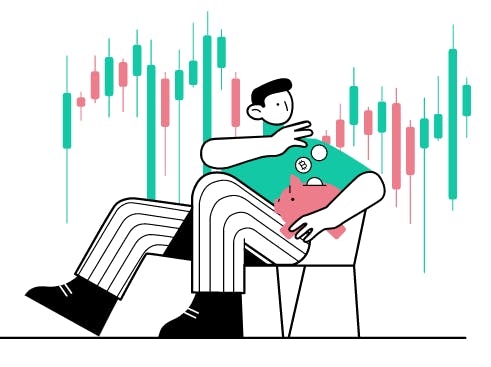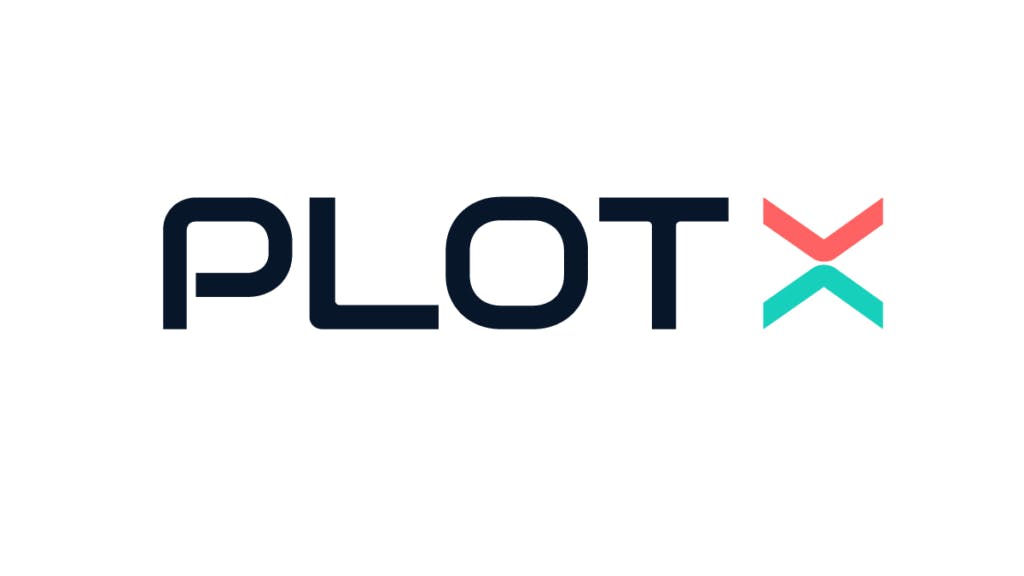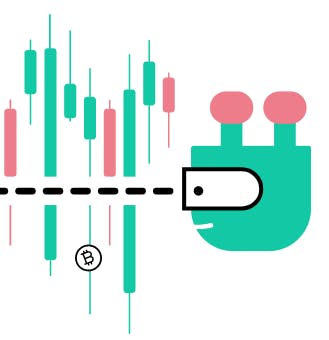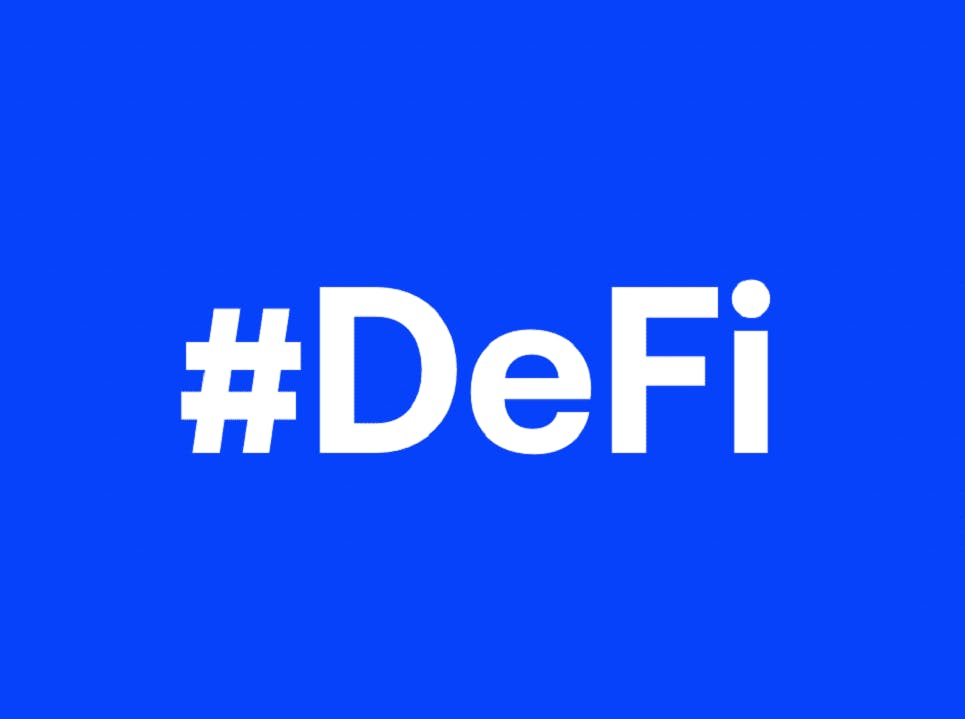
- All
- Tools
- Analytics
- Technical Analysis
- Trading
- Blockchain
- DeFi
- Guides
- Company News
- Educational
- Opinion
- Price Predictions
- Market News
- News
- Trading cases
- Practical guides
- Exchanges
- Trading signals
- Cryptocurrency
- Crypto bots
- Other
Become a crypto master
Learn everything about crypto,
trading and bots

DCA Bots: Creating a 2025 Futures DCA Bot using TradingView Buy/Sell Signals
Start Trading on 3Commas Today
Get full access to all 3Commas trading tools with free trial period

How do I create a Futures DCA Bot using Buy/Sell signals built-in to 3Commas? Read on…
Introduction
This article will show you how to create a Futures DCA Bot that triggers new trades using the built-in TradingView crypto-screener “Buy” signals.
For this guide we’ll be using the ever popular Bybit Futures exchange to scalp frequent small profits per day using Cross leverage, and the built-in TradingView “Buy” signals over a couple chart time frames.
If you are wondering how the TradingView crypto-screener “Buy/Sell” signals are generated, you can read more here, the signals provided by 3Commas for bot users are derived from the “Ratings” screener by TradingView, which is generated from the following technical analysis indicators:
Parabolic SAR, Bollinger Bands, MACD, Momentum, Awesome Oscillator, Average Directional Index, Commodity Channel Index, Stochastic, Relative Strength Index and lastly, Simple & Exponential Moving Averages.
If each of the above 10 individual indicators’ condition is true, such as the MACD is above the signal line or chart price is above EMA and SMA then this indicator result is scored as 1 (or “true”). The values are summed and if the total is 7 or above, for example, then this indicates a “Buy” signal.
A simple moving average (SMA) calculates the average of a selected range of prices, usually closing prices, by the number of periods in that range.
Choosing a contract to trade
For this guide we’ll choose the inverse EOS/USD contract to trade as it has recently been attempting to break above the 4 hour 200 EMA resistance before finally doing so on the 16th of November and started trending up after exceeding the last local “high” printed on the chart, in addition to this, Bitcoin/USD has also been trending up and this is a good sign for altcoins with USD pairings as a “rising tide lifts all ships”:
This strategy should be considered as high risk, as are any Futures or spot trades.
You’ll need to monitor the charts and if the price falls below the 200 EMA, then you may wish to stop the bot until the price breaks above it again.
An exponential moving average (EMA) is a type of moving average (MA) that places a greater weight and significance on the most recent data points.
This bot in this example was created to use 150 EOS that was deposited into the EOS wallet on the Bybit exchange. We will be using small orders and Cross leverage to scalp 0.75% profit with each successful trade to accumulate more EOS using the Bybit inverse EOSUSD contract.
We will configure the bot to use safety orders to be able to cover a large drop of upto 30% in the EOS chart price without liquidation.
As this bot will trade with Cross leverage, any profit created and left in the exchange account will increase your trading margin and help further offset the possibility of liquidation.
You may want to manage and further mitigate the possibility of liquidation by withdrawing a certain amount of profit above 175 EOS to a different wallet or exchange account or a weekly or monthly basis.
Creating the Bot
Head to the main menu and select DCA Bot and then click the Create Bot button:
We’re going to create a “Simple” bot, as all Futures bots can only trade a single contract.
Ensure the Advanced tab is selected at the top of the page and that you choose a descriptive Name (1) for your bot (this will appear in the History log and also on the My Deals page and DCA Bots page), choose the Exchange (2)account this bot will use funds on:
Now we will look at the Strategy settings; the default settings will be fine here.
We’ll be using Long (3) as we want to buy the coins at a low price and sell the coins at a higher price to make our profit.
We have only the option of Quote as our Profit Currency, as this is an inverse contract, all profit created will be in EOS.
If this is one of your first bots, it may be worth keeping the Base Order and Safety Order (4) amounts low, however for this example, we will be using 30 EOS for the Base and Safety order size, these amounts are the actual order sizes placed on the exchange including Cross (6) margin at x50 leverage, this actually means only 0.6 EOS of your trading funds will be used to place the Base order and 0.6 EOS for the first Safety order on the exchange.
In total this bot will use approximately 7.355 EOS of your funds without the leverage included, should all the DCA/Safety Orders be used. As you gain more confidence in your bot strategies, you may wish to risk more per bot deal.
It is recommended to keep the Start Order Type set to Limit (5) as this will guarantee the bot will open trades without price slippage and additionally will save some costs in exchange fees.
Next, we will set the Deal Start Condition; this setting tells the bot when to open a new trade on the coin we selected. We’ll be using the TradingView Buy (7) signals, as discussed earlier, across multiple time frames. This should allow our bot to start new trades when the EOS price is trending up as we’ll be aiming to quickly “scalp” small profits, so these trades should be fast to close and fairly frequent as they are used on a low chart time frame:
You can view the TradingView “Rating” signals , you will have to change the time frame to each you have chosen to use in the Deal Start Condition to view the individual current rating.
Now we will set the Take Profit settings on our bot, we are aiming for repetitive short trades as “scalping” low time frame charts is fairly risky, so the key is to aim to close all trades as fast as possible. Set the Target Profit value to 0.75% (8)and set the Take Profit Type setting to Percentage from total volume (9) as we would like the profit of 0.75% to be taken using the average price of the coins bought by this bot:
We will not be using Stop Loss settings for this bot, as we will rely on covering a significant drop in the chart price using Safety Orders (Dollar Cost Averaging). Warning: Trading on Futures exchanges is inherently risky, and while the rewards are great, so are the risks. If the price of EOS falls dramatically, you can be liquidated and lose your funds.
It you wish to use Stop Loss settings or refine this strategy further, please test these thoroughly using Paper Trading, however, the cryptocurrency market is known for being highly volatile, so you will often find that Stop Loss can actually increase your losses, as opposed to picking good quality coin charts that recover quickly or in a reasonable time should they suffer a temporary drop in price.
We will be using 6Safety Orders with this bot, and the 2Max Active Safety Trades Count (10); this ensures the funds required for 2 Safety Orders at a time will always be reserved placed on the exchange order book in advance as Limit Orders.
Safety Orders are used to lower the average purchase price of the coins the bot buys if the price falls lower once the trade has opened, this is also known as DCA or Dollar Cost Averaging.
The Price Deviation to Open Safety Orders (11) will be set to 0.5% for the first Safety Order used; The Safety Order Volume Scale (12)will be set to 1.25; this is so the amount of coins the Safety Order buys will increase by 25% each time a Safety Order is created. This will help to lower the average cost per coin bought by the bot.
The Safety Order Step Scale (12) will be set to 2; this means the bot will multiply this value with the Price Deviation to Open Safety Orders setting, in effect, our first Safety Order will be placed at 0.5% from the opening price of the trade (Base Order) and the second Safety Order will be placed 1% lower and the third Safety Order will be placed 2% lower. This covers a 31.5% drop in the coin price after the trade is opened and will help the bot to take profit faster or cover a large drop in price whilst keeping the trade running:
It is recommended to check the chart of the contract you will be trading and look for the last “high” the price reached on the daily or weekly chart and specify a value between 10%-15% lower than this value and enter it into the Maximum price to open deal (13) setting on the Advanced settings page. The reason for this is to avoid the bot creating trades “at the top” of a trending price rally, as these are typical points where price may reverse. You will manually have to periodically check the chart and assess whether to increase this value, and allow the bot to continue creating trades as price moves beyond this point. If price does break the previous high and this is confirmed, then you may raise this value to the next logical point as your Technical Analysis will suggest.
We can verify the amount of funds our bot will use by looking at the Bot Assistant – please don’t overlook the Bot Assistant, it is a good friend!
The Bot Assistant page will show the amount of funds this bot will need in order to work correctly with the configured settings, it also shows the maximum drop in price that your Safety Trades can cover and the percentage of your available funds the bot will use (always try to keep plenty of funds free when trading with Cross leverage as the available funds will be used to off-set your liquidation price of your open position):
The Table page shows you a visualisation of how the volume of funds will increase with your Safety Order Volume Scale setting and also the price deviation percentage the Safety Order Step Scale will cover. Finally, one of the most useful features of the Table page shows exactly how the Safety Orders will be used in granular detail:
Results
After only a few days since its creation, the bot results look promising! You can easily find the described
Warning: Trading on Futures exchanges is inherently risky, and while the rewards are great, so are the risks. If the price of the contract you are trading falls dramatically, you can be liquidated and lose your funds.
Conclusion - Navigating the Futures with DCA Bots in 2025
In this article, we've delved into the world of Futures trading using Dollar-Cost Averaging (DCA) bots, specifically focusing on creating a bot that capitalizes on TradingView's "Buy" signals within 3Commas. As we fast forward to 2025, it's evident that this strategy continues to hold relevance in the dynamic landscape of cryptocurrency trading. Let's recap the key takeaways from our exploration:
1. Understanding Buy Signals: We've discussed how TradingView generates "Buy" signals based on a combination of ten technical analysis indicators, such as MACD, Bollinger Bands, and Parabolic SAR. These signals serve as the foundation for our trading strategy.
2. Choosing the Right Contract: Our choice of trading the EOS/USD contract demonstrates the importance of selecting contracts that align with market trends. It's crucial to keep an eye on key indicators like the 200 EMA for entry and exit points.
3. Risk Management: This article emphasized the high-risk nature of Futures trading, underlining the necessity for continuous monitoring. Implementing strategies like safety orders to withstand price volatility and potential liquidation is a prudent approach.
4. Creating the Bot: The step-by-step guide to setting up a DCA bot highlights the significance of careful configuration. Whether it's selecting a suitable exchange, setting profit goals, or deciding on order types, each parameter impacts the bot's performance.
5. Deal Start Condition: We incorporated TradingView Buy signals across multiple time frames to ensure the bot initiates trades during favorable market conditions. Scalping small profits swiftly is the primary objective.
6. Take Profit and Safety Orders: We set a target profit percentage and opted for Percentage from total volume as our profit-taking method. Meanwhile, safety orders were used to manage downside risks, adhering to the Dollar-Cost Averaging approach.
7. Continuous Adaptation: The article encourages traders to remain flexible and adjust their settings based on market conditions. Monitoring charts, altering safety order parameters, and avoiding trading "at the top" of rallies are all part of staying agile in the crypto market.
8. Bot Assistant: We emphasized the importance of regularly checking the Bot Assistant page to gauge fund requirements, potential liquidation risks, and the extent of funds committed.
As we conclude our journey through the creation of a Futures DCA bot using TradingView Buy signals, it's essential to reiterate that the cryptocurrency market remains highly volatile and unpredictable. While the potential for lucrative gains exists, so do the inherent risks of significant losses, including liquidation.
To succeed in this ever-evolving crypto landscape in 2025 and beyond, traders must not only employ robust strategies but also stay informed about the latest market developments, regulatory changes, and emerging trends. Adaptability and risk management will continue to be the cornerstones of successful crypto trading, ensuring that traders navigate the tumultuous waters of crypto Futures with confidence and caution.
So, as you embark on your journey into the world of Futures trading, remember that while the landscape may shift, the fundamentals of prudent trading remain steadfast. May your trading endeavors in 2025 be marked by wisdom, profitable decisions, and a well-configured DCA bot by your side. Happy trading!
2025 Update: Smarter Futures DCA Bots with AI Signals and TradingView Integration
As crypto markets grow increasingly dynamic in 2025, futures traders are turning to more advanced automation strategies that combine DCA logic with precision-triggered entries. The integration between 3Commas as a software provider and TradingView remains central to this setup—only now, with added support for bot signals, AI-generated alerts, and expanded control over order scaling.
Professional traders and asset managers now have access to a more robust automation stack, where a crypto DCA bot can react not only to static Buy/Sell alerts but also to signals generated by machine learning models or custom Pine Scripts that factor in sentiment data, volatility metrics, or macro indicators. This allows for more contextual decision-making at entry and safer capital deployment across volatile futures markets.
In 2024 and 2025 3Commas upgraded the functionality of their Signal Bot, which can receive strategies copy and pasted directly from TradingView charts and perform complex trading maneuvers such as running a Short and Long position simultaneously.
What’s New for 2025:
- Expanded webhook capacity allows bots to act on multi-condition strategies derived from crypto signal bots or custom-built bots for crypto trading, not just single-indicator alerts.
- Risk-adjusted scaling options have been added, enabling allocation rules based on current volatility or position exposure—useful for managing larger accounts or deploying a bot for trading cryptocurrency across client portfolios.
- Strategy preview enhancements let you simulate DCA order layering and profit targets using real-time order book snapshots from supported exchanges, improving visibility before live deployment.
Institutional-Grade Signal Execution
By pairing TradingView with AI-enhanced alerts and the automation framework of 3Commas, institutional traders can orchestrate precise execution using crypto trading bot software that supports multi-account workflows. Whether you’re running a bot trader for long-biased strategies or deploying a bot for cryptocurrency trading with tighter drawdown parameters, the tools now offer detailed control over entries, scaling, and exits.
As automation becomes more nuanced in 2025, the focus isn’t just on entry price averaging—it’s on timing, context, and capital efficiency. Futures trading bots powered by smart signal infrastructure continue to play a pivotal role in professional crypto trading strategies.

A proven leader, successful at establishing operational excellence and building high-performance teams with a sharp focus on value creation and customer success.





